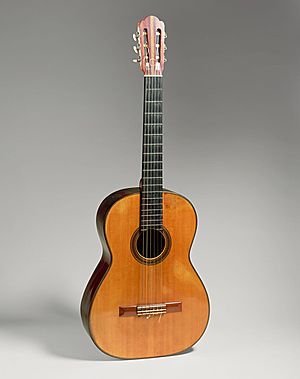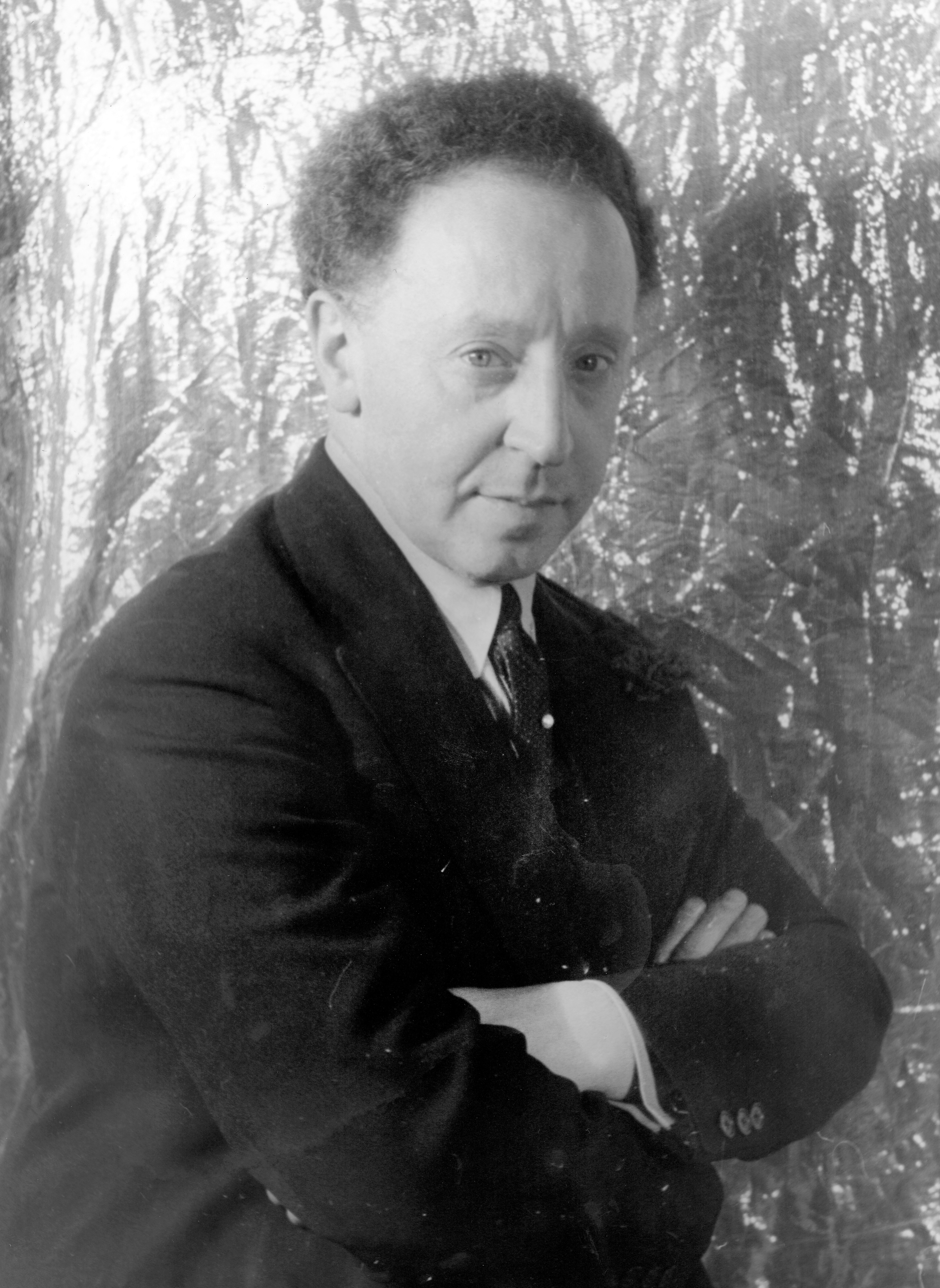|
Villa-Lobos
Heitor Villa-Lobos (March 5, 1887November 17, 1959) was a Brazilian composer, conductor, cellist, and classical guitarist described as "the single most significant creative figure in 20th-century Brazilian art music". Villa-Lobos has become the best-known South American composer of all time. A prolific composer, he wrote numerous orchestral, chamber music, chamber, instrumental and vocal works, totaling over 2000 works by his death in 1959. His music was influenced by both Brazilian folk music and stylistic elements from the European Classical period (music), classical tradition, as exemplified by his ''Bachianas Brasileiras'' (Brazilian Bachian-pieces) and his Chôros. His Etudes for classical guitar (1929) were dedicated to Andrés Segovia, while his ''5 Preludes'' (1940) were dedicated to his spouse Arminda Neves d'Almeida, a.k.a. "Mindinha". Both are important works in the classical guitar repertory. Biography Youth and exploration Villa-Lobos was born in Rio de Janeiro. Hi ... [...More Info...] [...Related Items...] OR: [Wikipedia] [Google] [Baidu] |
Chôros
''Chôros'' is the title of a series of compositions by the Brazilian composer Heitor Villa-Lobos, composed between 1920 and 1929. Origin and conception The word ''chôro'' (; nowadays spelled simply ''choro'') is Portuguese for "weeping", "cry", and came to be the name used for music played by an ensemble of Brazilian street musicians (called ''chorões'') using both African and European instruments, who improvise in a free and often dissonant kind of counterpoint called ''contracanto''. In this context, the term does not refer to any definite form of composition, but rather includes a variety of Brazilian types. Villa-Lobos described the basic concept of his ''Chôros'' as a "brasilofonia"—an extension of the popular street-musicians' Choro, chôro to a pan-Brazilian synthesis of native folklore, both Indian and popular. The tenth work in the series is for mixed choir and large orchestra, and quotes at length from a popular song, originally composed as an instrumental schottisc ... [...More Info...] [...Related Items...] OR: [Wikipedia] [Google] [Baidu] |
Uirapuru (Villa-Lobos)
''Uirapuru'' (subtitled ''O passarinho encantado'', “The Enchanted Little Bird”) is a symphonic poem or ballet by the Brazilian composer Heitor Villa-Lobos, begun as a revision of an earlier work in 1917 and completed in 1934. A recording conducted by the composer lasts 20 minutes and 33 seconds. History ''Uirapuru'' originated as a fifteen-minute symphonic poem titled ''Tédio de alvorada'' (Boredom at Dawn), composed in Rio de Janeiro in 1916 and first performed there on a concert sponsored by the for the benefit of retired journalists, at the Theatro Municipal on 15 May 1918 by an orchestra made up of 85 music teachers, conducted by Soriano Robert. Villa-Lobos extensively reworked and expanded this composition into the score retitled ''Uirapuru'', beginning in 1917. However, it was not until Serge Lifar and his ensemble danced the ballets ''Jurupari'' (to the music of ''Chôros No. 10'') and ''Amazonas'' in 1934 that Villa-Lobos completed ''Uirapuru'' and dedicated the sco ... [...More Info...] [...Related Items...] OR: [Wikipedia] [Google] [Baidu] |
Bachianas Brasileiras
The ''Bachianas Brasileiras'' () (an approximate English translation might be ''Bach-inspired Brazilian pieces'') are a series of nine Suite (music), suites by the Brazilian composer Heitor Villa-Lobos, written for various combinations of instruments and voices between 1930 and 1945. They represent a fusion of Brazilian folk and popular music on the one hand and the style of Johann Sebastian Bach on the other, as an attempt to freely adapt a number of Baroque music, Baroque harmonic and contrapuntal procedures to Brazilian music. Most of the Movement (music), movements in each suite have two titles: one "Bachian" (Preludio, Fuga, etc.), the other Brazilian (Embolada, O canto da nossa terra, etc.). In the Bachianas, Villa-Lobos employs the counterpoint and harmonic complexity typical of Bach's music and combines it with the lyrical quality of operatic singing and Brazilian song. The listener experiences the charm of the Brazilian landscape; the energy of Brazilian dance; the color, ... [...More Info...] [...Related Items...] OR: [Wikipedia] [Google] [Baidu] |
Andrés Segovia
Andrés Segovia Torres, 1st Marquis of Salobreña (21 February 1893 – 2 June 1987) was a Spanish virtuoso classical guitarist. Many professional classical guitarists were students of Segovia or their students. Segovia's contribution to the modern-romantic repertoire included not only commissions but also his own transcriptions of classical or baroque works. He is remembered for his expressive performances: his wide palette of tone, and his distinctive musical personality, phrasing and style. Early life Segovia was born on 21 February 1893 in Linares, Jaén. He was sent at a very young age to live with his uncle Eduardo and aunt María. Eduardo arranged for Segovia's first music lessons with a violin teacher after he had recognised that Segovia had an aptitude for music. That proved to be an unhappy introduction to music for the young Segovia because of the teacher's strict methods, and Eduardo stopped the lessons. His uncle decided to move to Granada to allow Segovia to ob ... [...More Info...] [...Related Items...] OR: [Wikipedia] [Google] [Baidu] |
Arthur Rubinstein
Arthur Rubinstein ( pl, Artur Rubinstein; 28 January 188720 December 1982) was a Polish Americans, Polish-American pianist."Artur Rubinstein" ''Encyclopædia Britannica'' He is widely regarded as one of the greatest pianists of all time. He received international acclaim for his performances of the music written by a variety of composers and many regard him as one of the greatest Frédéric Chopin, Chopin interpreters of his time. He played in public for eight decades. Early life [...More Info...] [...Related Items...] OR: [Wikipedia] [Google] [Baidu] |
Chamber Music
Chamber music is a form of classical music that is composed for a small group of instruments—traditionally a group that could fit in a palace chamber or a large room. Most broadly, it includes any art music that is performed by a small number of performers, with one performer to a part (in contrast to orchestral music, in which each string part is played by a number of performers). However, by convention, it usually does not include solo instrument performances. Because of its intimate nature, chamber music has been described as "the music of friends". For more than 100 years, chamber music was played primarily by amateur musicians in their homes, and even today, when chamber music performance has migrated from the home to the concert hall, many musicians, amateur and professional, still play chamber music for their own pleasure. Playing chamber music requires special skills, both musical and social, that differ from the skills required for playing solo or symphonic works. ... [...More Info...] [...Related Items...] OR: [Wikipedia] [Google] [Baidu] |
Darius Milhaud
Darius Milhaud (; 4 September 1892 – 22 June 1974) was a French composer, conductor, and teacher. He was a member of Les Six—also known as ''The Group of Six''—and one of the most prolific composers of the 20th century. His compositions are influenced by jazz and Brazilian music and make extensive use of polytonality. Milhaud is considered one of the key modernist composers.Reinhold Brinkmann & Christoph Wolff, ''Driven into Paradise: The Musical Migr ... [...More Info...] [...Related Items...] OR: [Wikipedia] [Google] [Baidu] |
Heitor Vila-Lobos
Heitor is a given name (''Hector'' in the Portuguese language) which may refer to: * Heitor (footballer, born 1898) (1898–1972), Ettore Marcelino Dominguez, Brazilian football striker * Heitor (Portuguese footballer) (born 1978), Portuguese football player and coach * Heitor (footballer, born April 2000), Heitor Marinho dos Santos, Brazilian football centre-back * Heitor (footballer, born November 2000), Heitor Rodrigues da Fonseca, Brazilian football right-back * Heitor Canalli (1907–1990), Brazilian football player * Heitor Dhalia (born 1970), Brazilian film director and screenwriter * Heitor Pereira (born 1960), Brazilian musician ** '' Heitor TP'', a 1994 album by Heitor Pereira * Heitor da Silva Costa (1873–1947), Brazilian civil engineer and designer of the ''Christ the Redeemer'' monument * Heitor Villa-Lobos Heitor Villa-Lobos (March 5, 1887November 17, 1959) was a Brazilian composer, conductor, cellist, and classical guitarist described as "the single most sign ... [...More Info...] [...Related Items...] OR: [Wikipedia] [Google] [Baidu] |
Sergei Diaghilev
Sergei Pavlovich Diaghilev ( ; rus, Серге́й Па́влович Дя́гилев, , sʲɪˈrɡʲej ˈpavləvʲɪdʑ ˈdʲæɡʲɪlʲɪf; 19 August 1929), usually referred to outside Russia as Serge Diaghilev, was a Russian art critic, patron, ballet impresario and founder of the Ballets Russes, from which many famous dancers and choreographers would arise. The active years of Diaghilev’s career can be divided into two periods: the one in St Petersburg (1898–1906) and the other in emigration (1906–1929). Biography Sergei Diaghilev was born in Selishchi to a noble officer . His mother died from childbed fever soon after his birth. In 1873, Pavel met and married Elena Panaeva, who loved Sergei and raised him as her own child. The in Perm was a local cultural centre, and the Diaghilevs housed a musical evening every second Thursday, Modest Mussorgsky being one of the most frequent guests. Sergei Diaghilev composed his first romance at the age of 15. When he enter ... [...More Info...] [...Related Items...] OR: [Wikipedia] [Google] [Baidu] |
Ballets Russes
The Ballets Russes () was an itinerant ballet company begun in Paris that performed between 1909 and 1929 throughout Europe and on tours to North and South America. The company never performed in Russia, where the Revolution disrupted society. After its initial Paris season, the company had no formal ties there. Originally conceived by impresario Sergei Diaghilev, the Ballets Russes is widely regarded as the most influential ballet company of the 20th century, in part because it promoted ground-breaking artistic collaborations among young choreographers, composers, designers, and dancers, all at the forefront of their several fields. Diaghilev commissioned works from composers such as Igor Stravinsky, Claude Debussy, Sergei Prokofiev, Erik Satie, and Maurice Ravel, artists such as Vasily Kandinsky, Alexandre Benois, Pablo Picasso, and Henri Matisse, and costume designers Léon Bakst and Coco Chanel. The company's productions created a huge sensation, completely reinvigorat ... [...More Info...] [...Related Items...] OR: [Wikipedia] [Google] [Baidu] |
WikiProject Composers
A WikiProject, or Wikiproject, is a Wikimedia movement affinity group for contributors with shared goals. WikiProjects are prevalent within the largest wiki, Wikipedia, and exist to varying degrees within Wikimedia project, sister projects such as Wiktionary, Wikiquote, Wikidata, and Wikisource. They also exist in different languages, and translation of articles is a form of their collaboration. During the COVID-19 pandemic, CBS News noted the role of Wikipedia's WikiProject Medicine in maintaining the accuracy of articles related to the disease. Another WikiProject that has drawn attention is WikiProject Women Scientists, which was profiled by ''Smithsonian Magazine, Smithsonian'' for its efforts to improve coverage of women scientists which the profile noted had "helped increase the number of female scientists on Wikipedia from around 1,600 to over 5,000". On Wikipedia Some Wikipedia WikiProjects are substantial enough to engage in cooperative activities with outside organization ... [...More Info...] [...Related Items...] OR: [Wikipedia] [Google] [Baidu] |
Paul Claudel
Paul Claudel (; 6 August 1868 – 23 February 1955) was a French poet, dramatist and diplomat, and the younger brother of the sculptor Camille Claudel. He was most famous for his verse dramas, which often convey his devout Catholicism. Early life He was born in Villeneuve-sur-Fère (Aisne), into a family of farmers and government officials. His father, Louis-Prosper, dealt in mortgages and bank transactions. His mother, the former Louise Cerveaux, came from a Champagne family of Catholic farmers and priests. Having spent his first years in Champagne, he studied at the ''lycée'' of Bar-le-Duc and at the Lycée Louis-le-Grand in 1881, when his parents moved to Paris. An unbeliever in his teenage years, Claudel experienced a conversion at age 18 on Christmas Day 1886 while listening to a choir sing Vespers in the cathedral of Notre Dame de Paris: "In an instant, my heart was touched, and I believed." He remained an active Catholic for the rest of his life. In addition, he discovere ... [...More Info...] [...Related Items...] OR: [Wikipedia] [Google] [Baidu] |






_ritratto_da_Valentin_Aleksandrovich_Serov.jpg)

